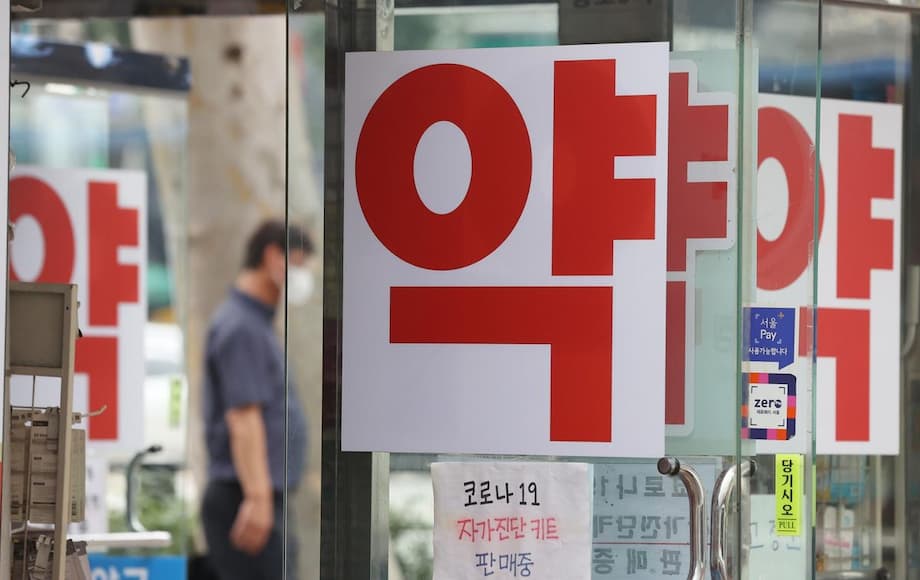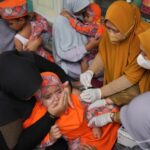A sharp turn from surplus to deficit in later life
Koreans move through a clear money arc as they age. On average, income first exceeds spending at age 28, peaks at 45, then falls behind spending again at 61. New 2023 National Transfer Accounts from Statistics Korea trace that pattern and show how rapid aging is widening the gap between what households earn and what they pay out.
- A sharp turn from surplus to deficit in later life
- Why does income peak in the mid 40s?
- When spending overtakes earnings again
- The squeeze on the working age population
- Education costs push the largest deficits for teens
- A changing consumption map across generations
- Who gains the least from rising health spending
- Policy choices now on the table
- What households can do to prepare
- The Essentials
In 2023, total household consumption reached 1,459.2 trillion won, a 7 percent rise from the year before, while income rose 5.5 percent to 1,232.8 trillion won. The difference produced a life cycle deficit of 226.4 trillion won, the largest since the series began in 2010 and an increase of 31 trillion won from a year earlier. Per person, Koreans run a deficit from birth through age 27, cross into surplus at 28, and reach peak labor income at 45 with 44.33 million won in annual income and a surplus of 17.47 million won. After the mid forties the surplus narrows as earnings plateau and needs continue to grow.
The return to deficit at 61 reflects two forces moving in opposite directions. Spending accelerates in later life, while post retirement income drops. Outlays by older Koreans grew 12 percent in 2023 compared with 6.3 percent among the working age population. Health care takes a bigger share for seniors, while education and living costs dominate the early years. Sixteen year olds recorded the largest annual deficit, averaging more than 44 million won because schooling and related payments fall on families while teenagers have little or no income.
Why does income peak in the mid 40s?
By the mid 40s many workers have climbed their career ladder and gathered experience that supports higher pay. At the same time, several headwinds begin to press on earnings. Wage curves flatten as employees move into management or specialist roles, while opportunities for rapid step ups become less frequent. A sizable share of workers also shifts from large firms to smaller companies or self employment in their 50s, which often means lower pay and less stable hours. Layoffs and early retirements are more common for older workers in sectors facing technological change or weak demand. These labor market realities help explain why average income levels out and then falls after midlife.
Earlier retirement and job changes
Average effective retirement in Korea arrives earlier than the legal retirement age for many employees. Corporate structures rely heavily on seniority based systems and periodic reshuffling, which can push mid career workers into second careers or consulting. Re entry into the workforce in a new role often comes with a smaller paycheck. Health issues or caregiving responsibilities for parents or spouses can also reduce hours and limit job choices. The combined effect is a gradual softening of income from the late 40s onward.
When spending overtakes earnings again
The crossover back into deficit at 61 reflects rising medical needs, more frequent hospital visits, prescription costs, and support services, alongside continued spending on housing, food, and utilities. Health expenditure in Korea has risen quickly over the past decade. A peer reviewed analysis covering 2011 to 2020 reported that individuals aged 60 and above accounted for just over half of total health spending. Public insurance covers a large share, but households still face sizable out of pocket bills.
The out of pocket bite
Public programs accounted for about 64 percent of health care spending in 2020. The remainder, roughly 36 percent, came from out of pocket payments by households. Payments for non covered services grew faster than payments for covered care, which means older people often face the highest bills right when their incomes shrink. The most costly conditions include musculoskeletal disorders, urinary tract problems, hypertension, diabetes, and other chronic diseases that become more common with age. That medical reality helps explain why spending among older adults jumped at double the pace of the working age group in 2023.
The squeeze on the working age population
Working age Koreans finance not only their own consumption and savings, but also support children and seniors through taxes and private transfers. In 2023, transfers to younger and older generations reached 320.7 trillion won. Children aged 0 to 14 received 184.5 trillion won through public education, health programs, and family support as well as private allowances and gifts. Those aged 65 and older received 131.1 trillion won through pensions, health care, and private support. The working age surplus totaled 137.2 trillion won, down 4.7 percent from the year before, which weakens the capacity to fund both ends of the age spectrum.
Taxes are the main channel for these flows. Workers paid 199.4 trillion won in taxes that were redistributed as 92.4 trillion won for children and 106.9 trillion won for older adults. Public transfers cover a large share of education and health costs, yet households still shoulder living expenses and many medical bills. As prices climb and interest costs bite, some families rely more on asset income and borrowing to maintain support for dependents. Shrinking surpluses make that approach harder to sustain over time.
What National Transfer Accounts show
The National Transfer Accounts framework tracks how income is generated and shared across age groups in an economy. It distinguishes between labor income, asset income, and consumption, then measures the surplus or deficit at each age and the flows of public and private transfers that balance the system. A rising life cycle deficit signals that consumption is outpacing income by a wider margin, which increases reliance on transfers and asset drawdowns. Korea’s 2023 figures point to a larger financing ask on the working population as aging accelerates.
Education costs push the largest deficits for teens
Teenagers sit at the deepest point of the early life deficit because education costs peak while their own income is minimal. Spending on schooling is a mix of public education and private outlays for tutoring, exam preparation, language programs, and extracurriculars. A recent government survey by Statistics Korea and the Ministry of Education found that nearly half of children under six participated in private education. English academies for young children were especially expensive, averaging about 1.545 million won per month, and children in these programs spent many hours each week in paid instruction.
Private education spending varies widely by household income. Families with higher earnings enroll at higher rates and pay many times more than lower income families. That early spending adds pressure to household budgets during the years when parents are also saving for housing and retirement. It can also reinforce inequality in learning opportunities. The result is a large education bill for many households when children are in middle and high school, which aligns with the very high per person deficit recorded at age 16 in the 2023 accounts.
A changing consumption map across generations
Demographic change is reshaping how and how much Koreans spend. The Bank of Korea has reported a decline in the average propensity to consume, the share of income that households spend, from the early 2010s to the 2022 to 2024 period. One driver is the growing share of older adults in the population. The proportion of those aged 55 to 69 has risen sharply over the past decade. As people approach retirement, they often cut discretionary spending and increase saving for longevity. Many households also hold a large share of their wealth in real estate rather than cash, which can reduce day to day liquidity.
What this means for growth
The central bank estimates that demographic change reduced annual consumption growth by about 0.8 percentage points from 2013 to 2024 and could trim as much as 1 point per year between 2025 and 2030. Surveys by business groups also show spending has fallen or stagnated across most age brackets in recent years, with a pronounced pullback among those in their 60s. People under 40 have seen both income and spending dip, linked to delayed marriage and childbirth and weaker demand for big ticket categories. Spending patterns are shifting, with younger adults allocating more to dining out and leisure, while middle aged consumers spend more on wellness and home focused goods.
Who gains the least from rising health spending
Higher national health spending does not translate into equal gains for all groups. Research co authored by health economist Karen Eggleston examined how efficiently spending converts into longer, healthier lives across income groups. Between 2010 and 2018, adults in the lowest income quintile experienced the smallest improvement in quality adjusted life expectancy despite increases in per person spending that were similar to other groups. The study points to poorer baseline health, more chronic disease, and greater unmet needs in the lowest income group, as well as barriers to preventive services. Korea also has one of the highest old age poverty rates among advanced economies, which intensifies the burden of out of pocket payments on senior households with little cash flow.
Policy choices now on the table
Policymakers face two intertwined goals, supporting seniors with dignity and security while protecting the earning power and financial stability of younger and middle aged workers. Debate is active on how to strengthen the basic pension and other supports for the elderly poor, while keeping long run fiscal health intact. Some proposals call for a gradual increase in the effective retirement age paired with more jobs suited to older workers and a shift in pay systems toward compensation by job value rather than seniority. Better transition programs for mid career workers could ease the shift into new roles without large income losses.
On the health side, experts point to ways to reduce out of pocket exposure for high cost conditions and to bring more non covered services under the public umbrella. Caps on out of pocket spending for seniors with multiple chronic diseases, expanded coverage for essential drugs and diagnostics, and tighter management of unnecessary services are all part of the discussion. Stronger primary care, more prevention, and better coordination between medical care and long term care can cut avoidable hospital use and improve well being at lower cost.
Education policy is another lever. Expanding affordable public childcare and after school programs can reduce the need for expensive private instruction, especially in early childhood. Transparency around fees and outcomes, alongside support for community based learning, can help families get value for money. Housing policy that eases down payment and interest burdens for young households can free up income for childrearing and education without excessive borrowing. Family benefits tied to births and early childhood, if well designed, can lighten the financial load during the years when parents are most stretched.
Labor and skills policies round out the picture. Re skilling and lifelong learning help workers in their 40s and 50s stay employable as technology changes. Greater participation by women, supported by childcare and flexible work options, can lift household income during the high cost childrearing years. Some industries are also weighing targeted migration to ease labor shortages. Each track aims to spread earning opportunities more evenly across the life cycle so that fewer households fall into deficit before they are ready.
What households can do to prepare
No single strategy fits every family, yet several steps can improve resilience to the income peak and later life deficit that the national accounts make visible.
- Map your household life cycle budget. Estimate typical spending and income at each stage, from early career and childrearing to late career and retirement. Plan for the years when education and health costs are highest.
- Build buffers in the peak earning years. Increase emergency savings and contributions to private pensions when income is strongest in the 30s and 40s. Automate saving so surpluses do not get absorbed by lifestyle creep.
- Plan for health and care costs. Review public benefits and consider supplemental insurance that limits out of pocket exposure for chronic conditions. Know which services are non covered and shop for providers that offer evidence based care.
- Invest in employability. Maintain certifications, learn new tools, and explore second career pathways by the late 40s. Part time consulting or phased retirement can smooth income rather than creating a cliff.
- Set education budgets early. For children and teens, decide on a spending cap for private instruction, use public resources where possible, and focus on programs that show measurable learning gains.
- Manage debt proactively. Track interest costs on mortgages and consumer loans, and avoid borrowing to fund recurring consumption. Refinance when rates and terms improve.
The Essentials
- Income exceeds spending from age 28 to 60, peaks at 45, then turns to deficit at 61 according to 2023 National Transfer Accounts.
- Total consumption rose 7 percent to 1,459.2 trillion won in 2023, while income rose 5.5 percent to 1,232.8 trillion won, creating a record 226.4 trillion won life cycle deficit.
- Sixteen year olds recorded the largest per person deficit, linked to education costs. Peak labor income was 44.33 million won at age 45 with a surplus of 17.47 million won.
- Spending by older adults grew 12 percent in 2023, nearly twice the pace of the working age group. Health care is a major driver.
- Transfers to children and seniors reached 320.7 trillion won, while the working age surplus fell 4.7 percent to 137.2 trillion won.
- About 36 percent of health spending is out of pocket, and people aged 60 and older account for a little over half of total health expenditure.
- Private education is widespread and costly, with early childhood English programs averaging about 1.545 million won per month for those enrolled.
- Demographic change has reduced annual consumption growth by an estimated 0.8 percentage points since 2013 and could trim up to 1 point per year through 2030.
- Studies find the lowest income adults gain the least health value per won spent, which reflects unmet needs and heavier financial strain.
- Policy debate centers on pensions, retirement timing, senior employment, health coverage for high cost care, childcare and education access, and skills development across the life course.




